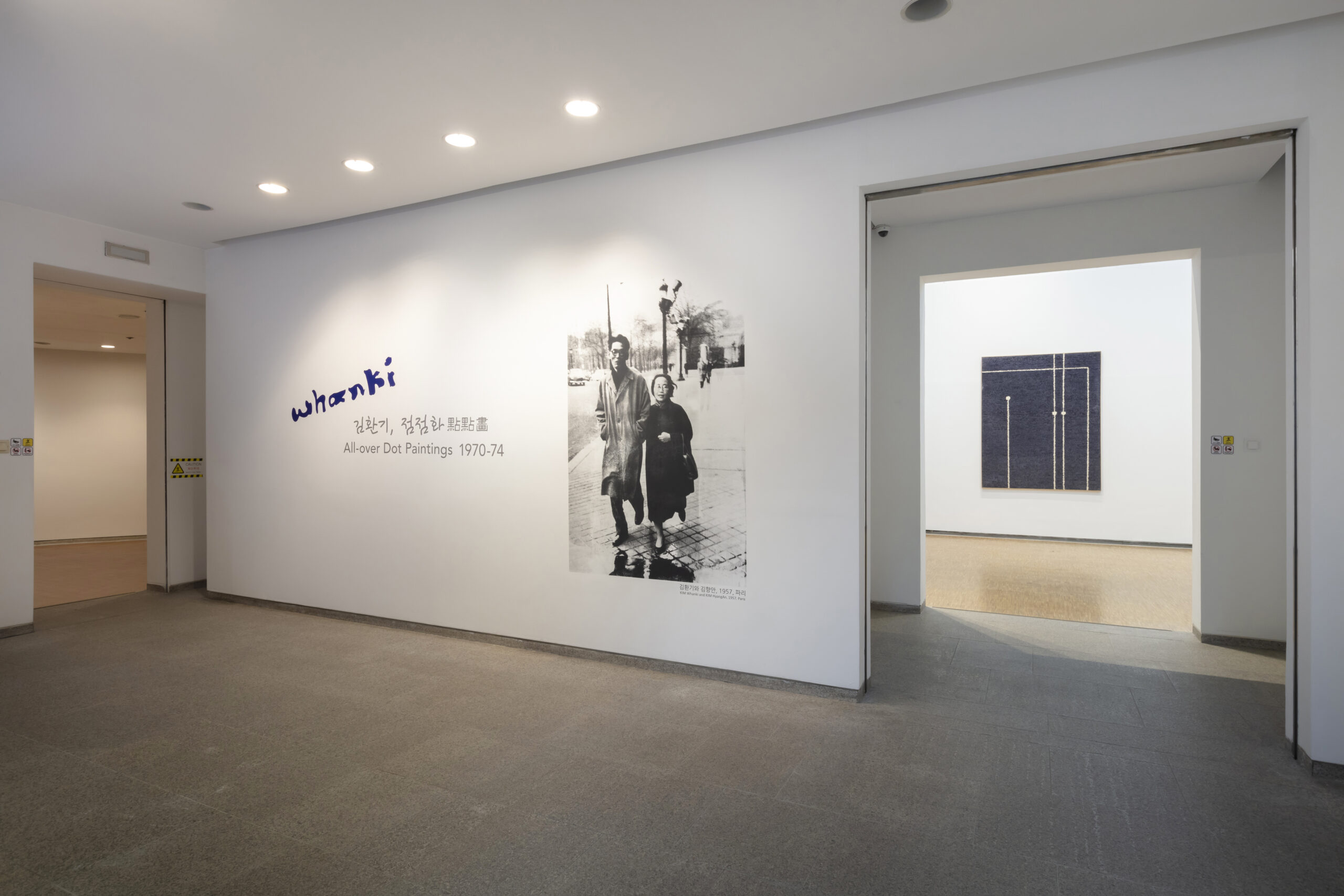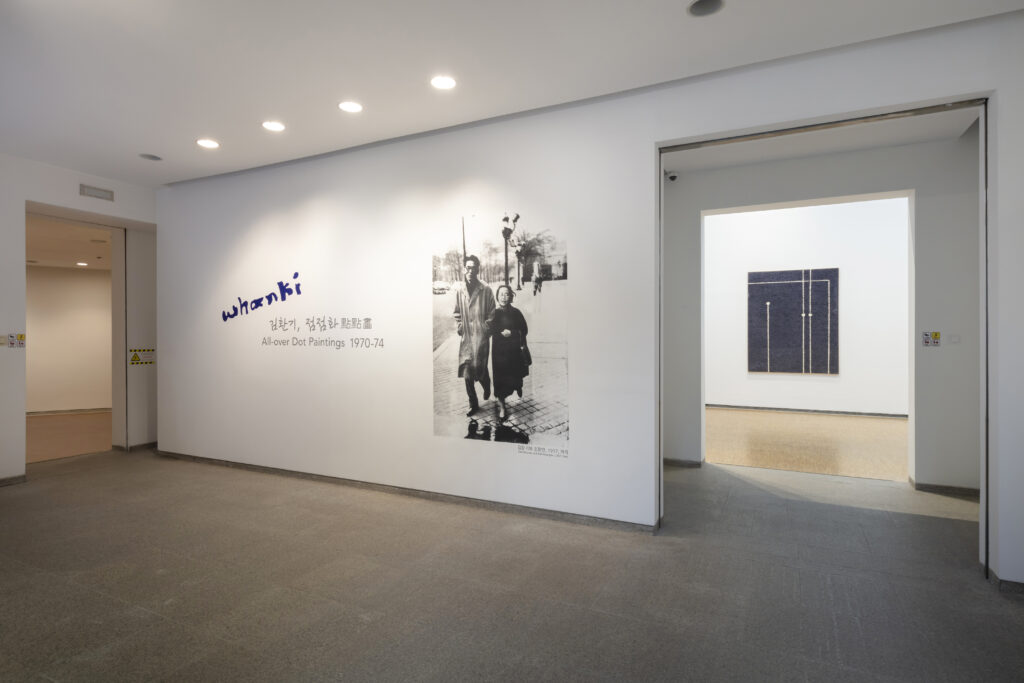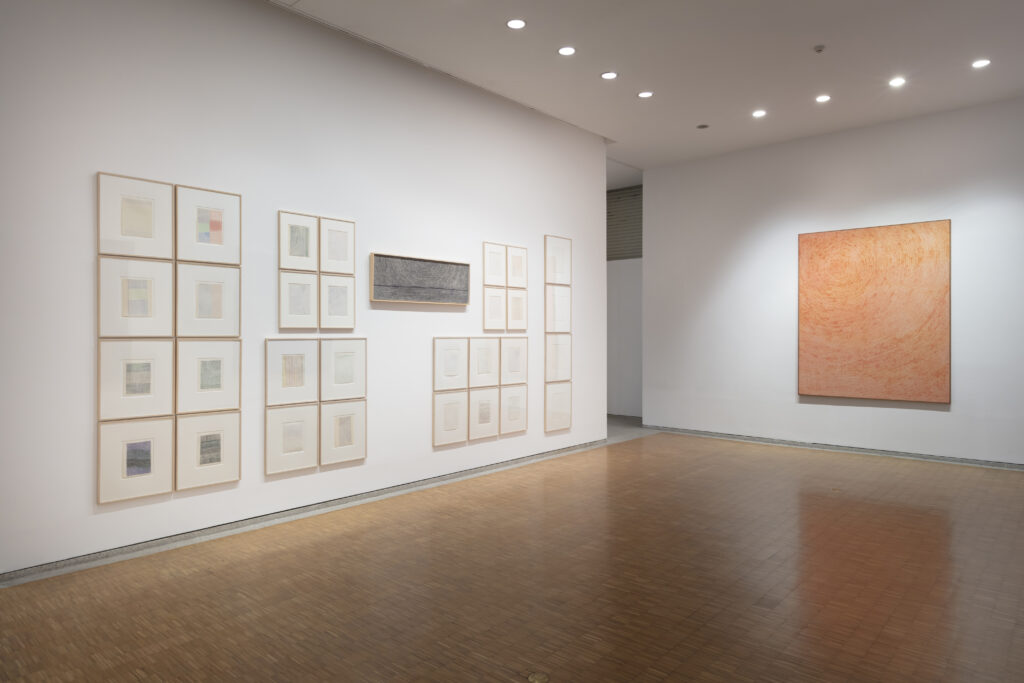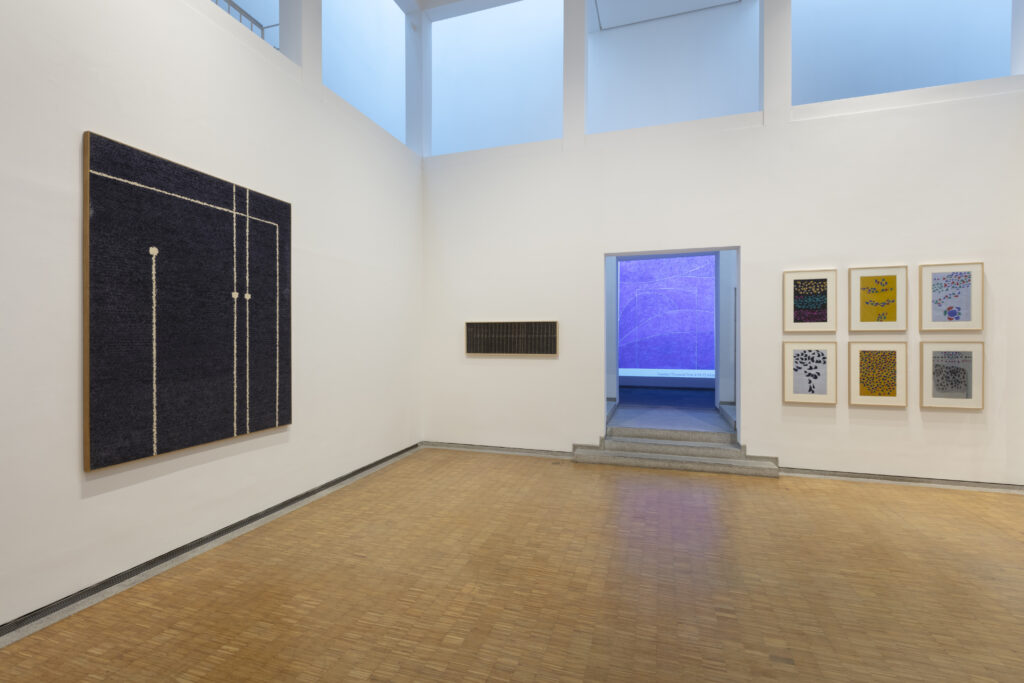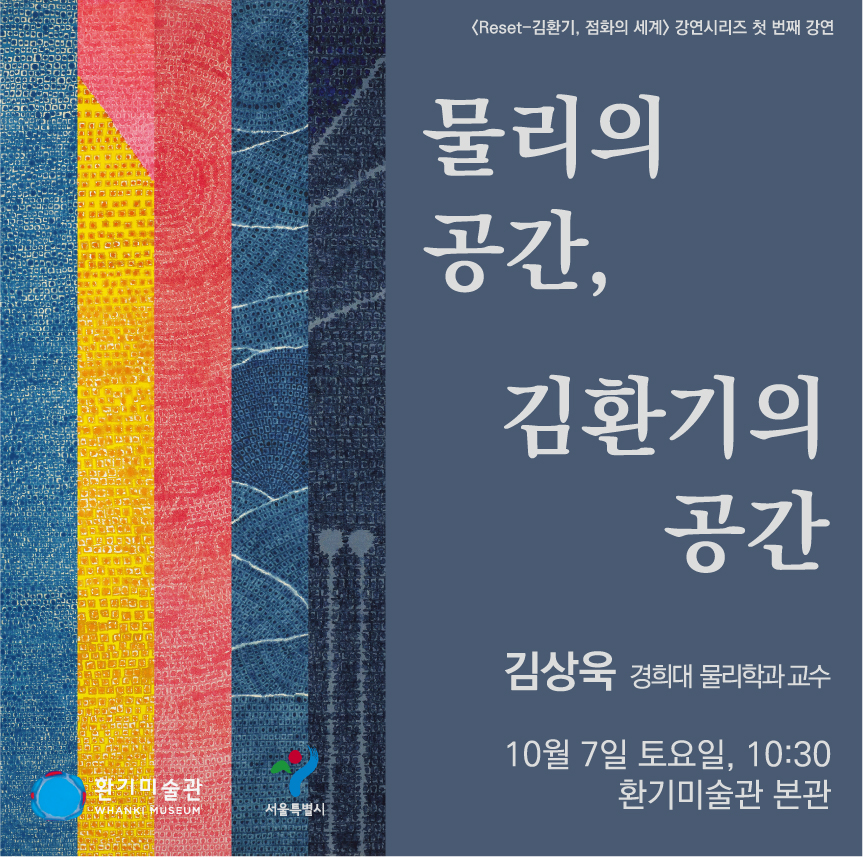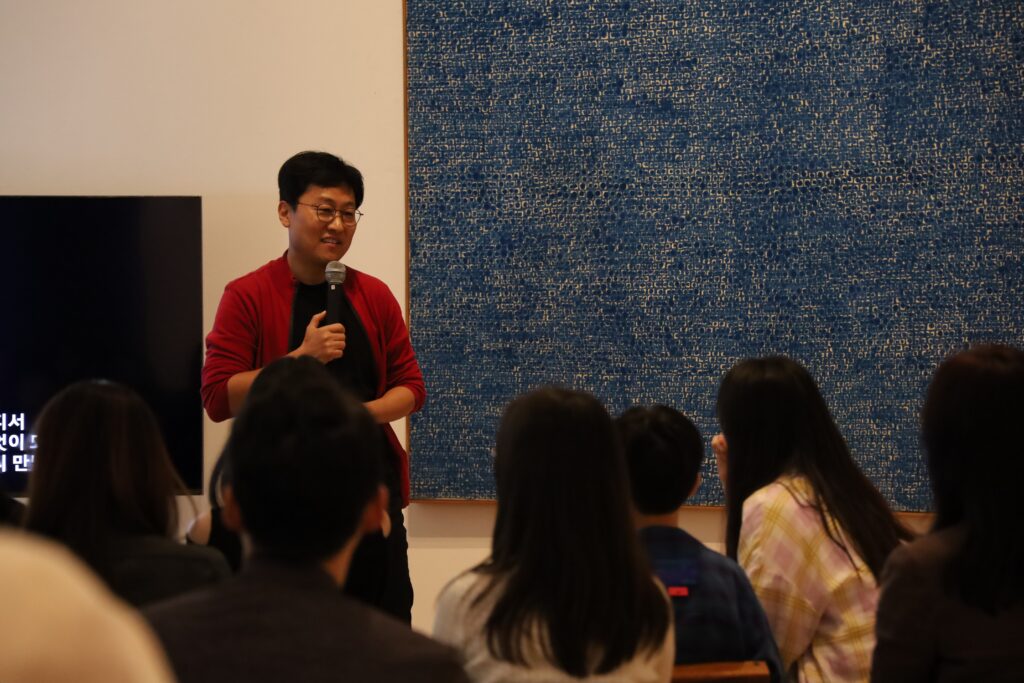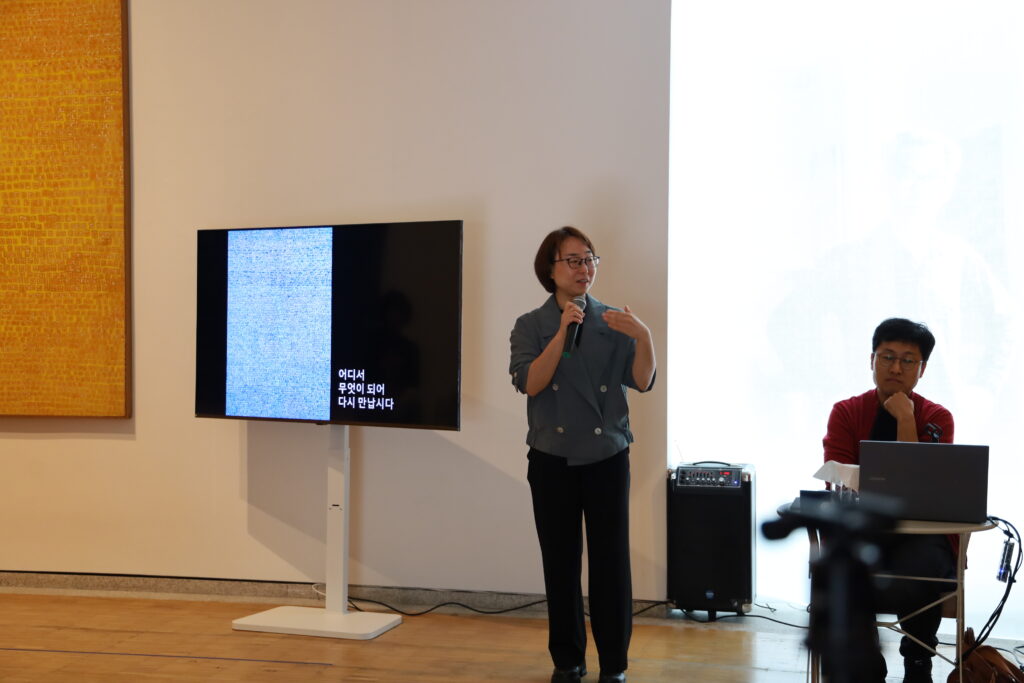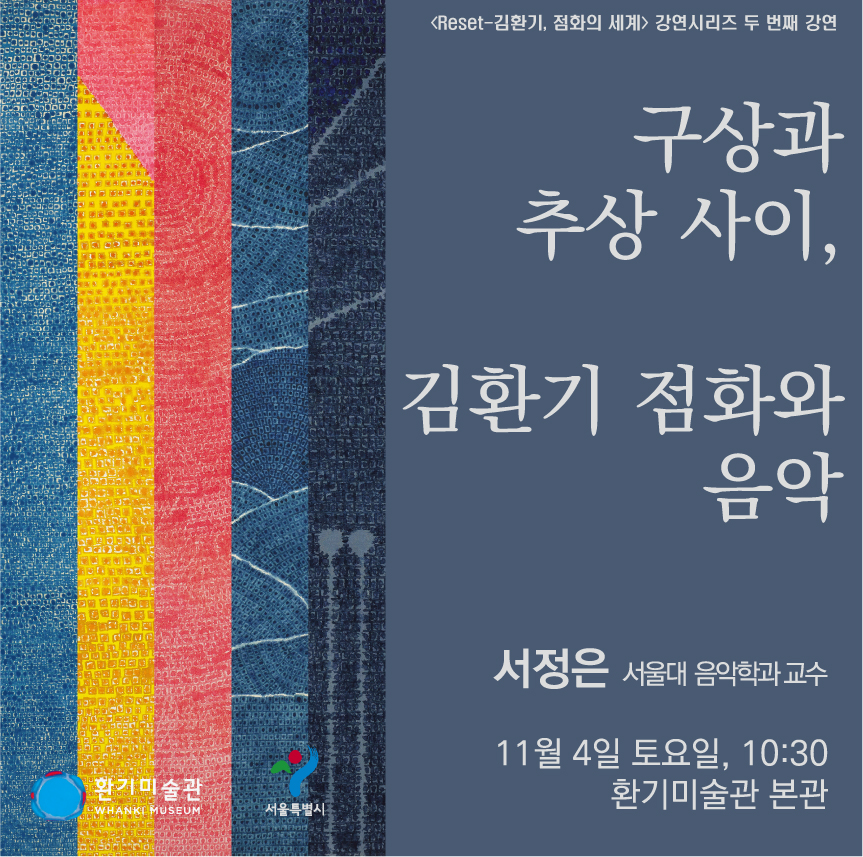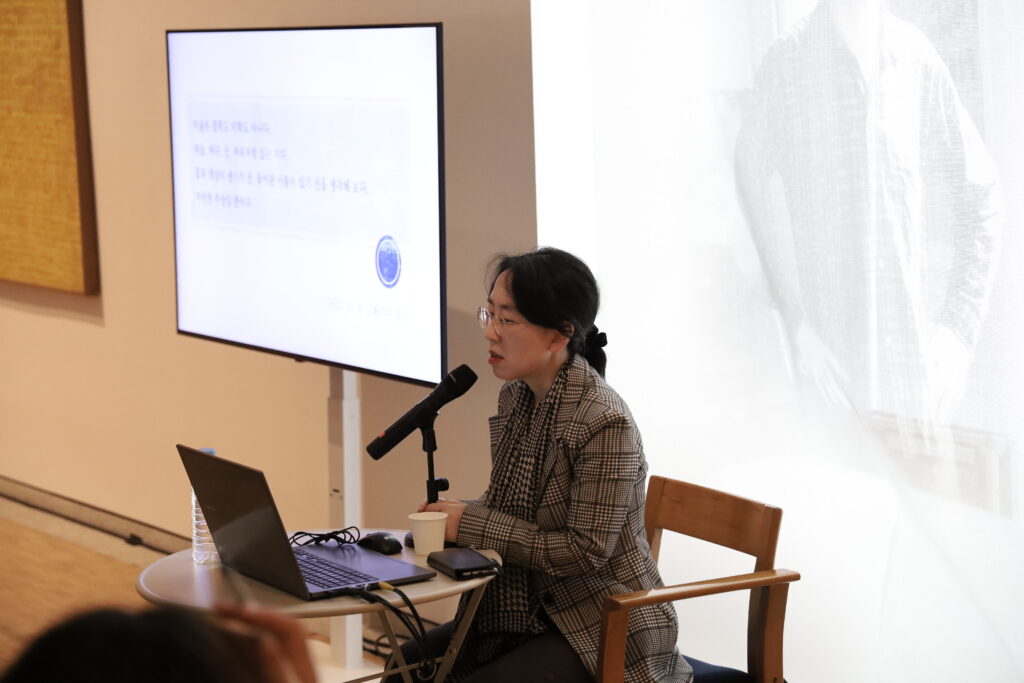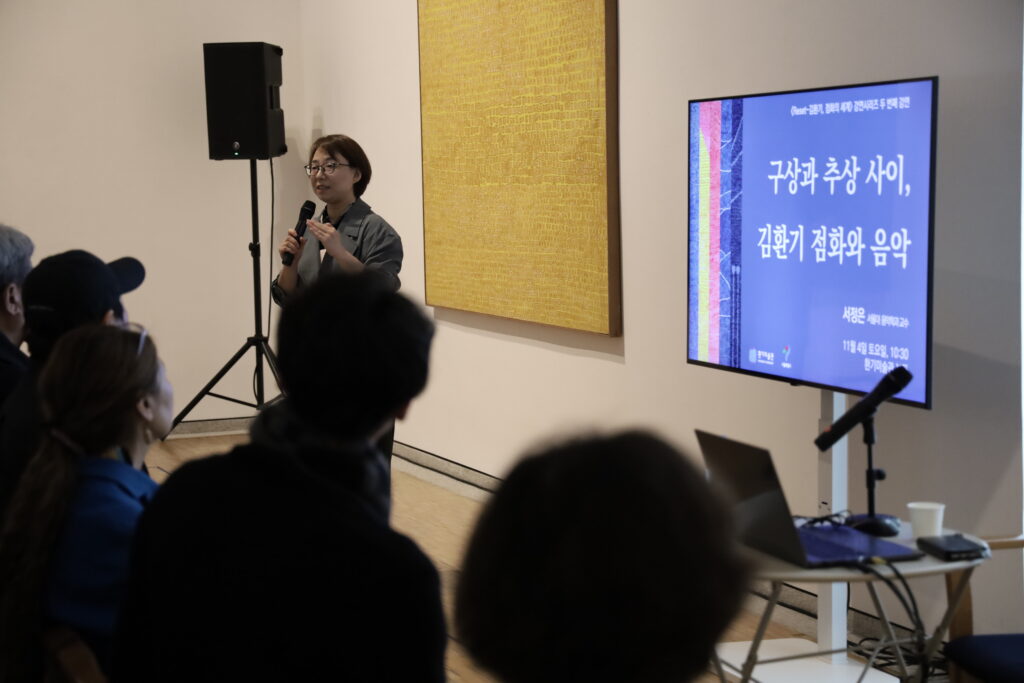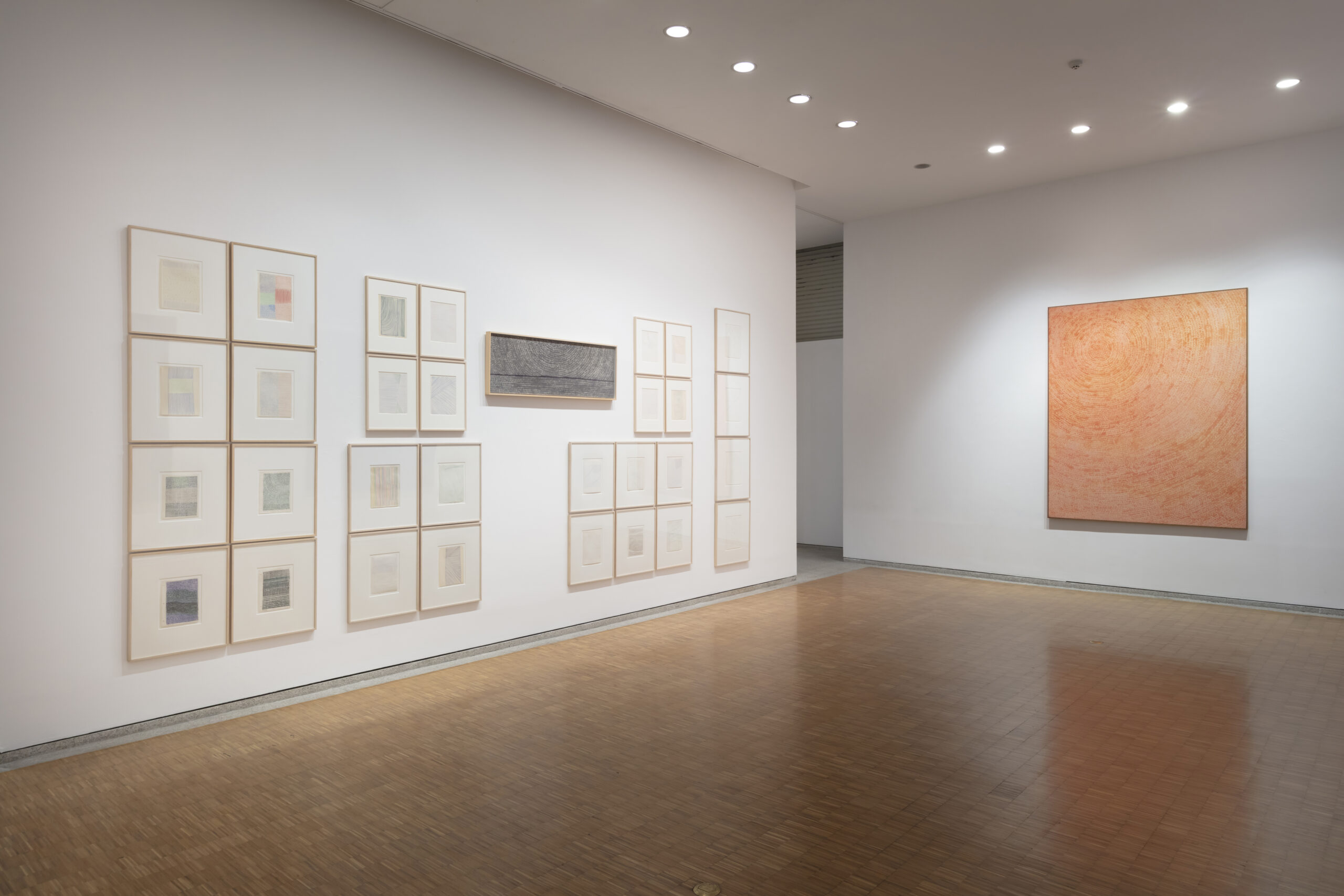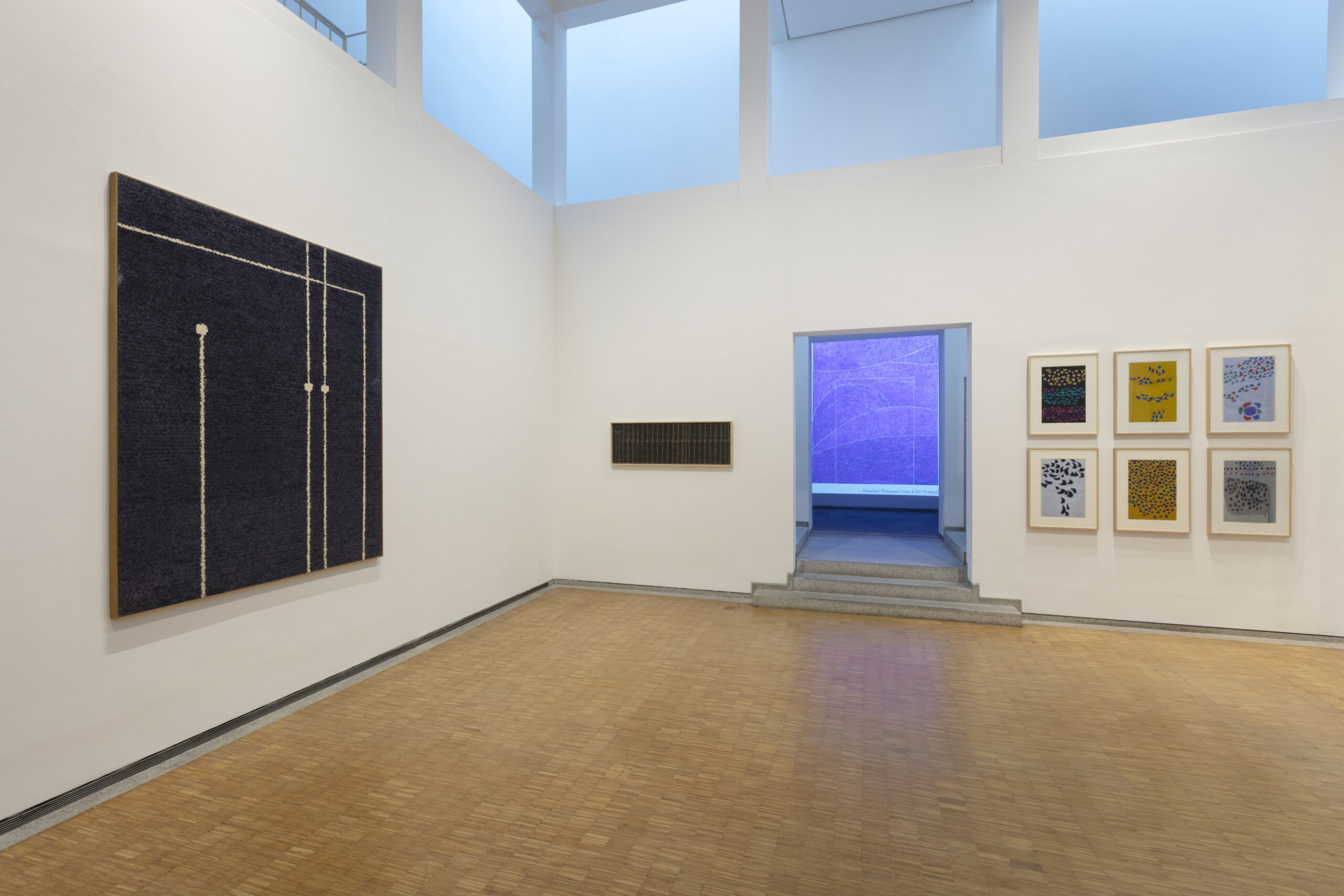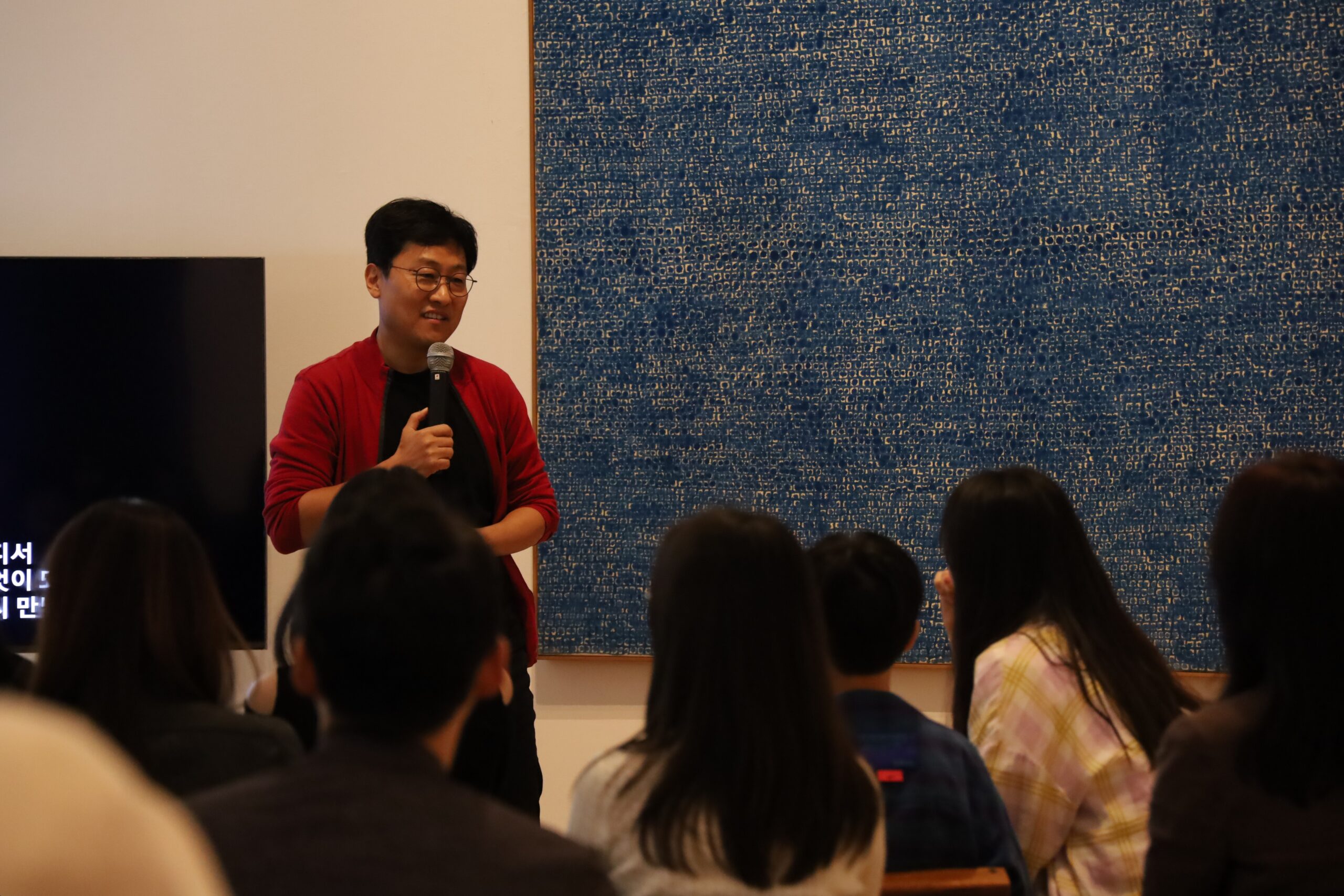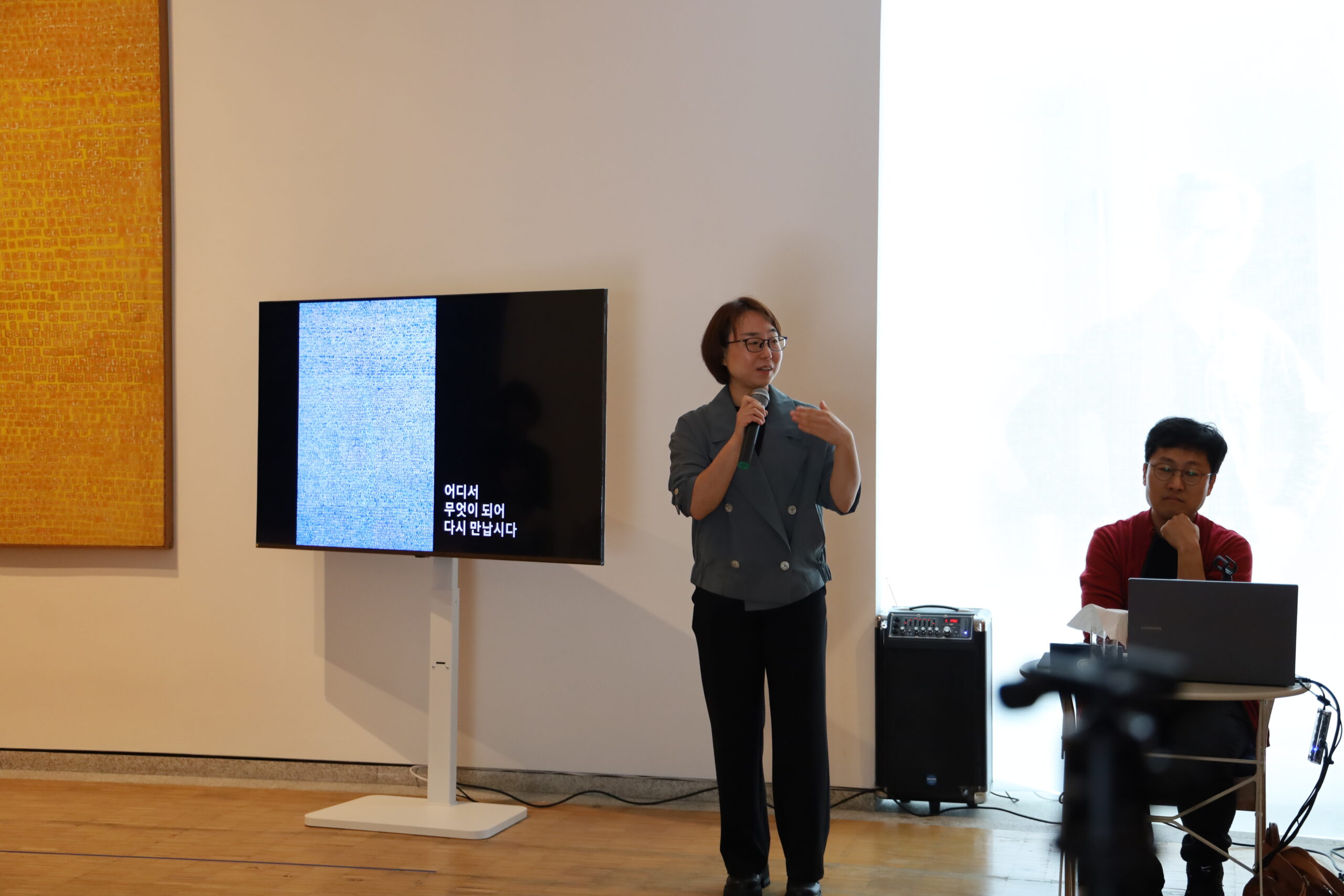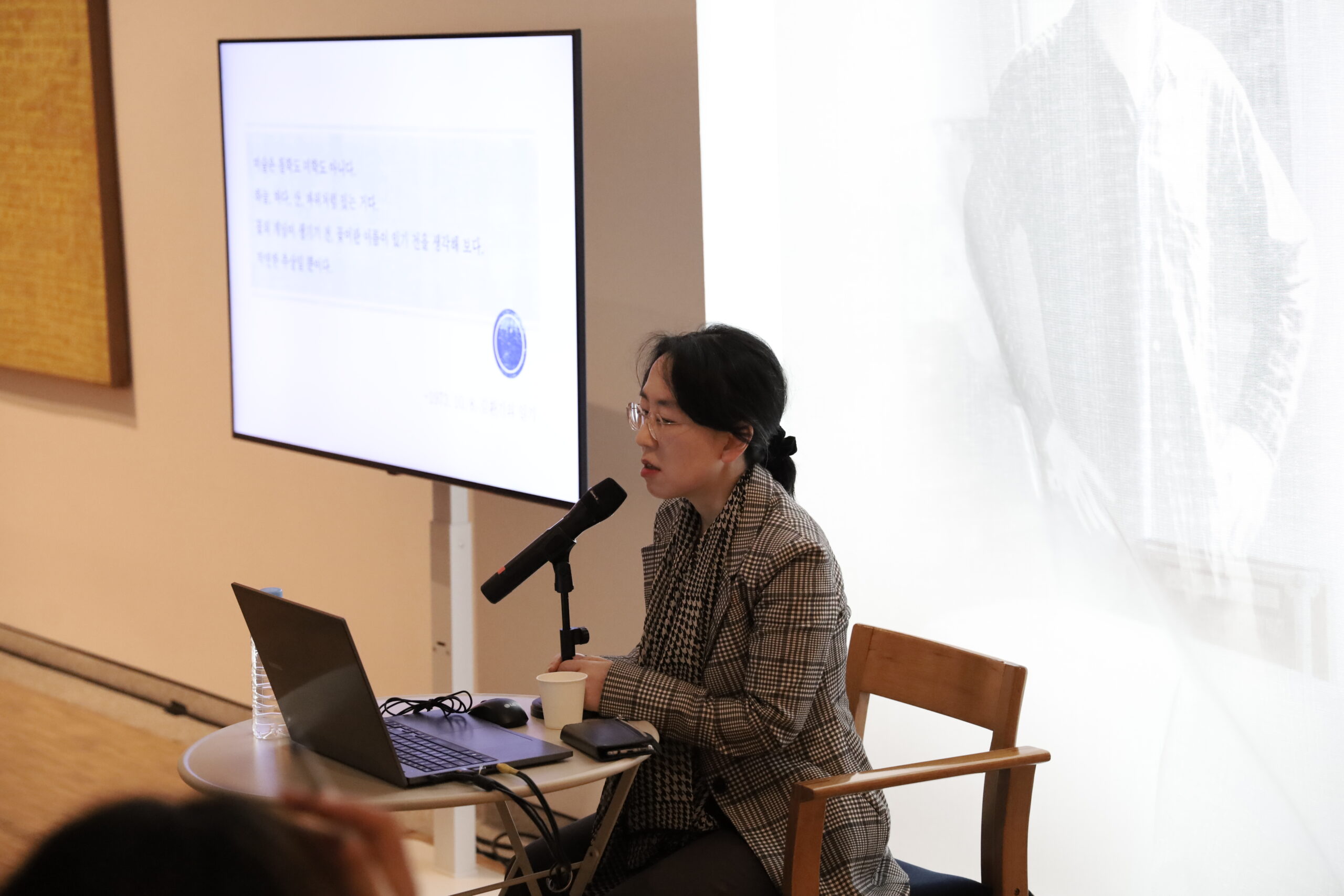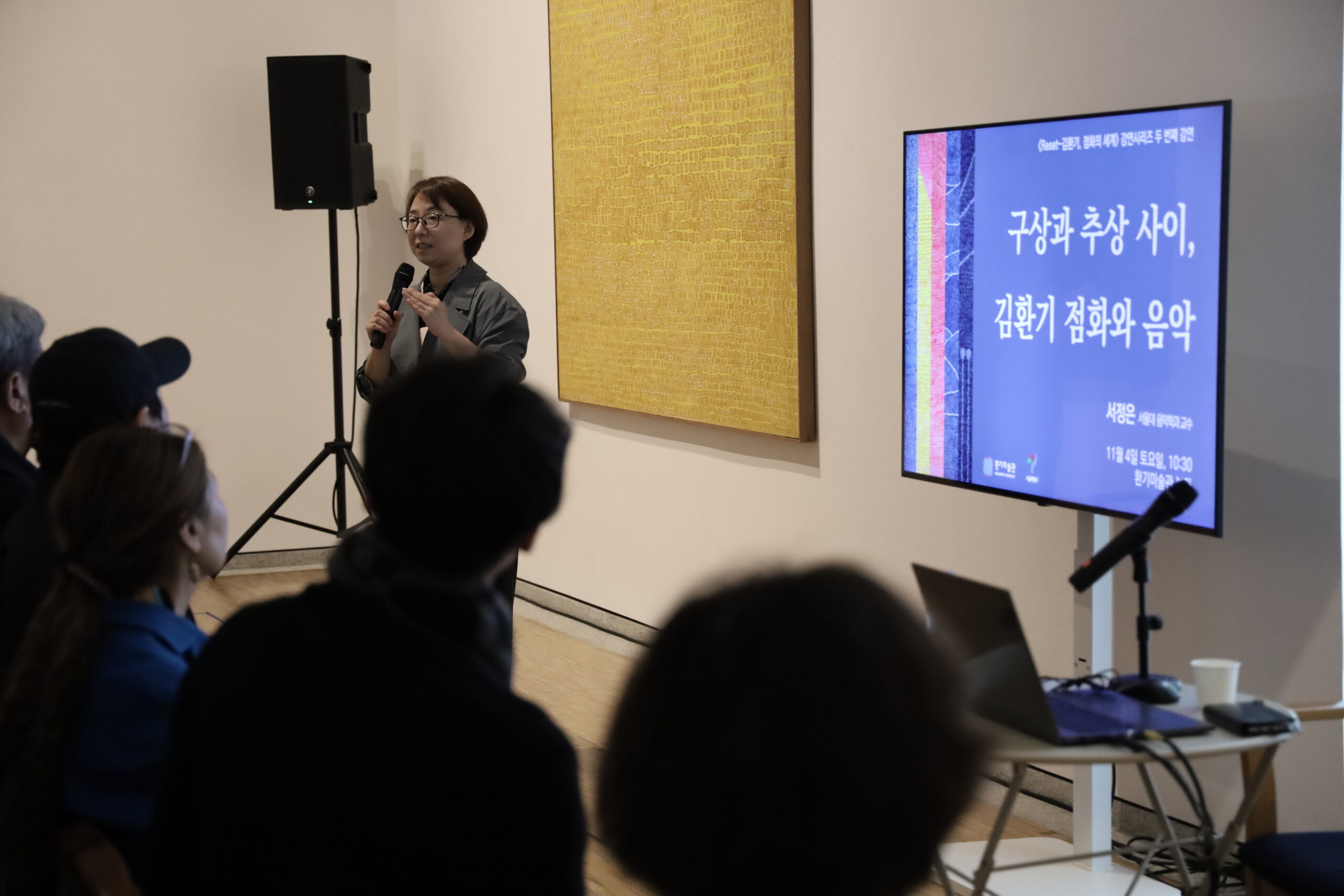This exhibition explore Whanki’s dot paintings, focusing on the large-scaled ones that were created between 1970 and 1974, as this was the period he mainly developed them. By providing Whanki’s journal and related archival materials, this exhibition offers an opportunity to reconsider his universe of dot paintings within an objective context, allowing viewers to contemplate it anew.
The first appearance of the term of ‘dot painting’ in Whanki’s journal was on January 2, 1965 and “Morning Stars in Winter” is noted as the first dot painting in his journal on January 11 of the same year, however, this artwork has not been found. During the late 1960s, when the concept of ‘dot painting’ emerged, Whanki conducted extensive experiments in composition, materials, and techniques, utilizing dots, lines, and planes in order to find his unique style of abstraction. This period marked as his active exploration of different methods including composition styles like straight lines and cross structures, as well as works using gouache and collage techniques on newspapers and traditional Korean paper hanji. He also created three-dimensional assemblages known as papier mâchés, engaging in both two and three-dimensional creative processes. Throughout artworks from this period, we can observe the development of the fundamental motif of dot paintings, understanding how the forms of dots and the surrounding rectangular shapes has been developed.
